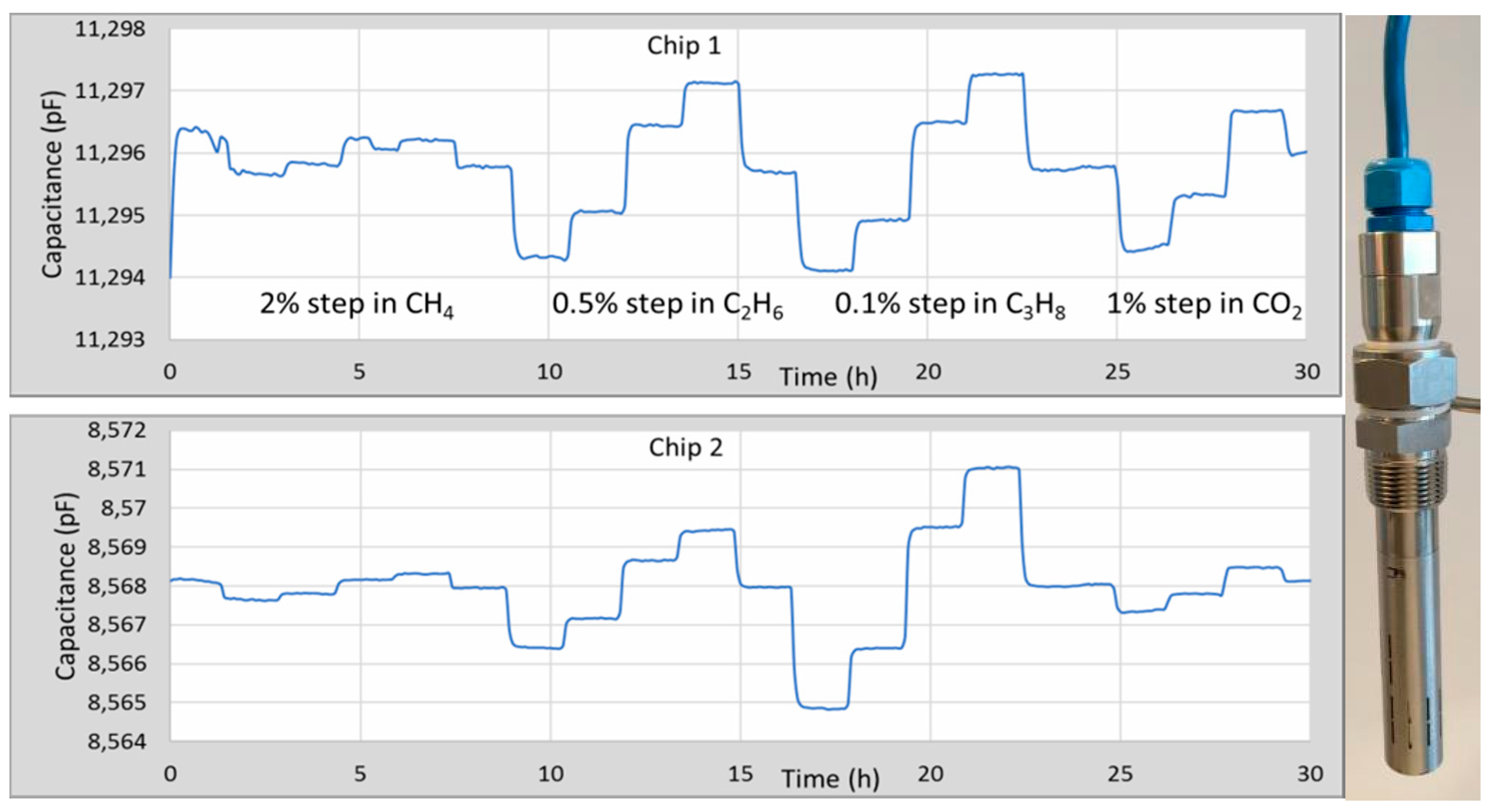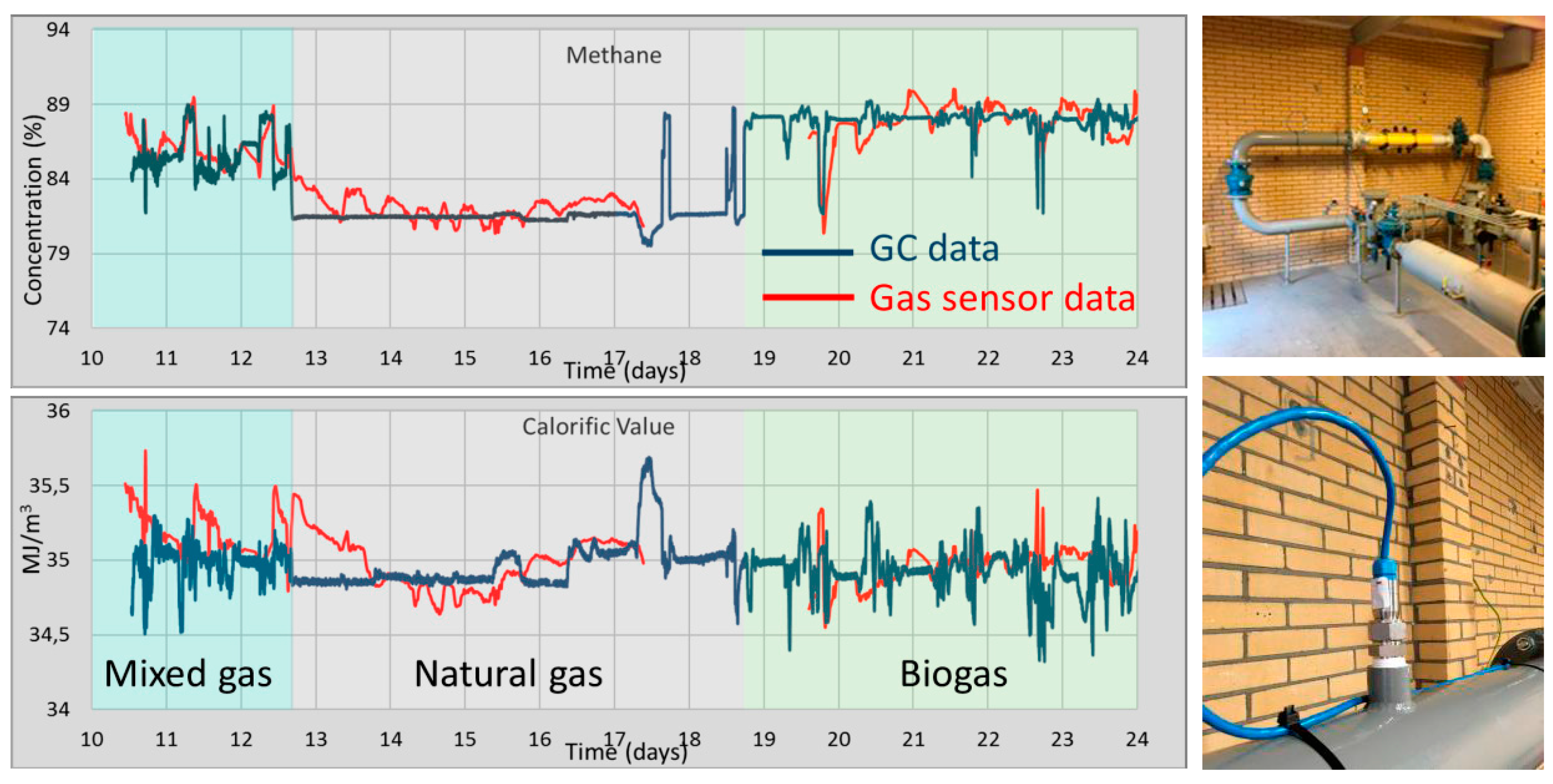Multiparameter Sensor Array for Gas Composition Monitoring †
Abstract
:1. Introduction
2. Approach
3. Results of the Field Tests
4. Conclusions
Author Contributions
Acknowledgments
Conflicts of Interest
References
- De Graaf, G.; Bakker, F.; Wolffenbuttel, R.F. Sensor platform for gas composition measurement. Proc. Eng. 2011, 25, 1157–1160. [Google Scholar] [CrossRef]
- Snelders, D.; Boersma, A.; De Jong, A.-J. Gas Sensor Array and Method. U.S. Patent WO2016003272, 30 June 2014. [Google Scholar]
- Boersma, A.; Sweelssen, J.; Blokland, H. Gas composition sensor for natural gas and biogas. Proc. Eng. 2016, 168, 197–200. [Google Scholar] [CrossRef]
- Clausen, C.H.; Skands, G.E.; Bertelsen, C.V.; Svendsen, W.E. Coplanar electrode layout optimized for increased sensitivity for electrical impedance spectroscopy. Micromachines 2015, 6, 110–120. [Google Scholar] [CrossRef]
- Oberänder, J.; Jildeh, Z.B.; Kirchner, P.; Wendeler, L.; Bromm, A.; Iken, H.; Wagner, P.; Keusgen, M.; Schöning, M.J. Study of interdigitated electrode arrays using experiments and finite element models for the evaluation of sterilization processes. Sensors 2015, 15, 26115–26127. [Google Scholar] [CrossRef] [PubMed]
- Snelders, D.J.M.; Valega Mackkenzie, F.O.; Boersma, A.; Peeters, R.H.M. Zeolites as coating materials for Fiber Bragg Grating chemical sensors for extreme conditions. Sens. Actuators B 2016, 235, 698–706. [Google Scholar] [CrossRef]





Publisher’s Note: MDPI stays neutral with regard to jurisdictional claims in published maps and institutional affiliations. |
© 2018 by the authors. Licensee MDPI, Basel, Switzerland. This article is an open access article distributed under the terms and conditions of the Creative Commons Attribution (CC BY) license (https://creativecommons.org/licenses/by/4.0/).
Share and Cite
Boersma, A.; Sweelssen, J.; Blokland, H. Multiparameter Sensor Array for Gas Composition Monitoring. Proceedings 2018, 2, 867. https://doi.org/10.3390/proceedings2130867
Boersma A, Sweelssen J, Blokland H. Multiparameter Sensor Array for Gas Composition Monitoring. Proceedings. 2018; 2(13):867. https://doi.org/10.3390/proceedings2130867
Chicago/Turabian StyleBoersma, Arjen, Jörgen Sweelssen, and Huib Blokland. 2018. "Multiparameter Sensor Array for Gas Composition Monitoring" Proceedings 2, no. 13: 867. https://doi.org/10.3390/proceedings2130867




